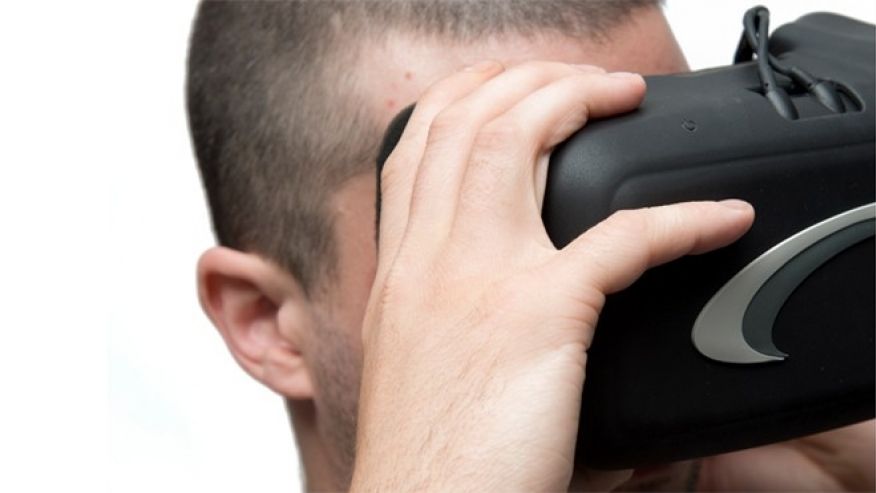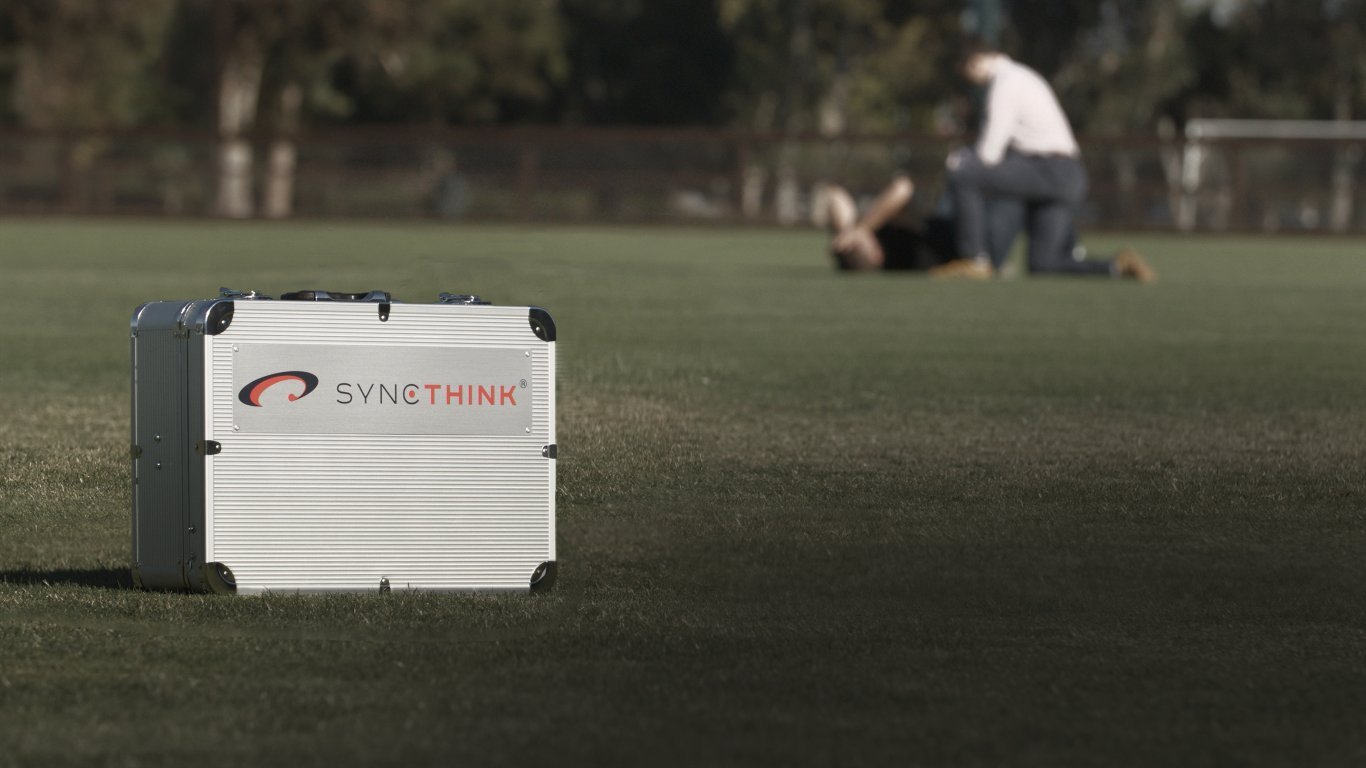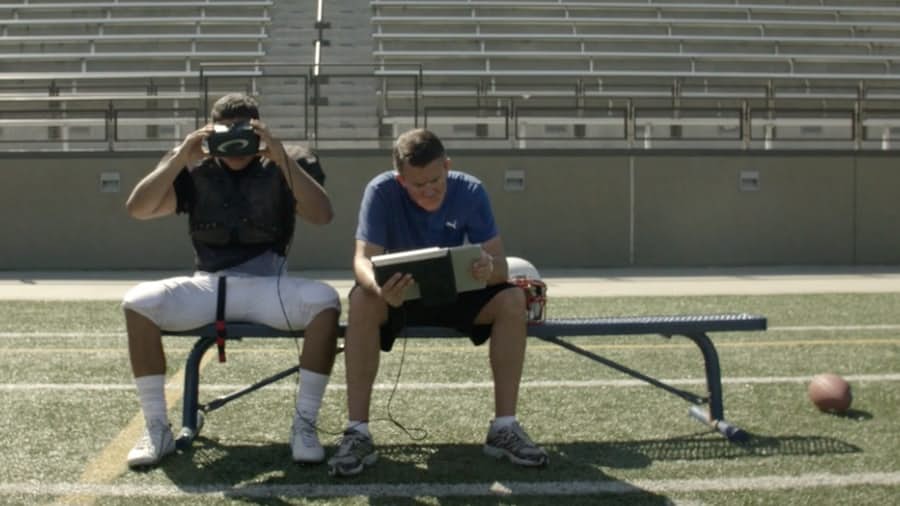Indiana University Uses VR to Study Head Impacts
EYE-SYNC, created by SyncThink, is a VR headset that features a head-mounted eye tracking device for quick, reliable viewing, analyzing, and recording of eye movement impairment through the use of Virtual Reality.

SyncThink Employs the EYE-SYNC to Study Subconcussions
SyncThink announced the use of EYE-SYNC, its first medical device, in a study on sub-concussive head impacts by Indiana University. EYE-SYNC will be used to study the linkage between eye movement and repetitive impacts in football players. The study is being carried out by Assistant Professor Keisuke Kawata.
EYE-SYNC has been used in many clinical settings and sports, generating adequate ocular-motor parameters centering around smooth pursuit attention tasks. The company has corroborated the technology with many soldiers and athletes. Previous works from Syncthink and others show that the ocular motor system is a significant impairment in concussion.
“Detection of subclinical neural impairments following repetitive sub-concussive head impacts is a study that’s extremely important in the medical and sports verticals. From a sideline setting, any added studies and information that can be immediately accessed will assist in keeping our athletes safer and help with recovery plans or return-to-play decisions.”
Said Daniel Beeler, CTO of SyncThink.

The EYE-SYNC VR Headset is Essential in the Study
The study made by Kawata will be useful to fill the evident void in the sub-concussive head impacts area, and the EYE-SYNC VR headset will deliver valuable metrics in his research for ocular-motor perturbation after sub-concussive head impacts. The research team will assist in any and analytical and technological processes during the study.
“By tracking sub-concussive impacts combined with various parameters, we have witnessed a glimpse, but plausible hope that some modalities could predict a concussion before it occurs. It is my priority to establish brain-injury specific objective markers that to ensure soldiers and athletes’ safety while sustaining the highest level of performance.”
Said Keisuke Kawata, Assistant Professor of Kinesiology at Indiana University.
Professor Kawata will use the EYE-SYNC headset to study sub-concussive effects in competitive divers while using a controlled soccer-heading model. Changes in eye movement parameters will be correlated with sustained head impact kinematics. The study will begin in February 2017 and it will be further extended to high school ice-hockey and football.

About SyncThink
Founded in 2009 by Dr. Jamshid Ghajar, MD, PhD, FACS, Director of the Stanford Concussion and Brain Performance center and President of the Brain Trauma Foundation, SyncThink is one of the world leaders in neuro-technology with foundational IP in eye tracking metrics and devices. Based in Boston, SyncThink works with a strong group of dedicated scientists, engineers and business experts with the goal of empowering people with effective tools to monitor and optimize their brain health. EYE-SYNC is available for purchase via the SyncThink website. For more information please visit: www.syncthink.com
https://virtualrealitytimes.com/2017/04/15/indiana-university-uses-vr-to-study-head-impacts/https://virtualrealitytimes.com/wp-content/uploads/2016/12/1458581730698-600x338.jpghttps://virtualrealitytimes.com/wp-content/uploads/2016/12/1458581730698-150x90.jpgHealthSportsVR HeadsetsEYE-SYNC, created by SyncThink, is a VR headset that features a head-mounted eye tracking device for quick, reliable viewing, analyzing, and recording of eye movement impairment through the use of Virtual Reality. SyncThink Employs the EYE-SYNC to Study Subconcussions SyncThink announced the use of EYE-SYNC, its first medical device, in a...Anushay QaiserAnushay Qaiser[email protected]Contributor gobet slot daywinbet daywin gobetasia gobet daywinbet daywinbet gobetasia daywinbet gobetasia Virtual Reality Times - Metaverse & VR
